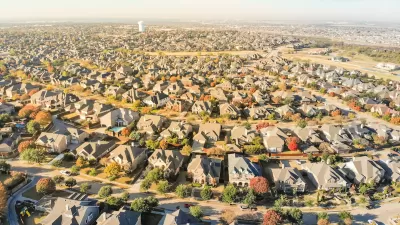The car-centric design of many U.S. cities traps young people at home, preventing them from engaging in social activities and urban life.

In an opinion piece published in Congress for New Urbanism’s Public Square, high school senior Rahul Rejeev argues that “The lack of effective transit, coupled with the lack of kid-friendly destinations and the feeling of more dangerous neighborhoods, means that today’s youth find it harder than ever to go outside, meet up with friends, and form more meaningful relationships.”
The American reliance on the personal automobile particularly impacts young people, many of whom face barriers that prevent them from getting their licenses or buying cars even when they’re old enough. “Lack of mobility coupled with large distances means that kids are far from the places where they want to hang out,” isolating them from social and economic opportunities. “Public transport is the only guaranteed way for a young person to be free and enjoy mobility,” Rejeev writes.
For Rejeev, zoning reform, pedestrian-friendly infrastructure, and efficient public transit are not just ways to curb carbon emissions and reduce car dependency, but also significant ways to improve the lives of young people.
FULL STORY: Children, left behind by suburbia, need better community design

Trump Administration Could Effectively End Housing Voucher Program
Federal officials are eyeing major cuts to the Section 8 program that helps millions of low-income households pay rent.

Planetizen Federal Action Tracker
A weekly monitor of how Trump’s orders and actions are impacting planners and planning in America.

Ken Jennings Launches Transit Web Series
The Jeopardy champ wants you to ride public transit.

Rebuilding Smarter: How LA County Is Guiding Fire-Ravaged Communities Toward Resilience
Los Angeles County is leading a coordinated effort to help fire-impacted communities rebuild with resilience by providing recovery resources, promoting fire-wise design, and aligning reconstruction with broader sustainability and climate goals.

When Borders Blur: Regional Collaboration in Action
As regional challenges outgrow city boundaries, “When Borders Blur” explores how cross-jurisdictional collaboration can drive smarter, more resilient urban planning, sharing real-world lessons from thriving partnerships across North America.

Philadelphia Is Expanding its Network of Roundabouts
Roundabouts are widely shown to decrease traffic speed, reduce congestion, and improve efficiency.
Urban Design for Planners 1: Software Tools
This six-course series explores essential urban design concepts using open source software and equips planners with the tools they need to participate fully in the urban design process.
Planning for Universal Design
Learn the tools for implementing Universal Design in planning regulations.
Ada County Highway District
Clanton & Associates, Inc.
Jessamine County Fiscal Court
Institute for Housing and Urban Development Studies (IHS)
City of Grandview
Harvard GSD Executive Education
Toledo-Lucas County Plan Commissions
Salt Lake City
NYU Wagner Graduate School of Public Service





























